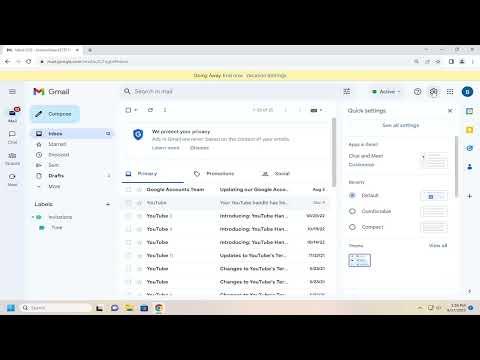I vividly remember the day I first encountered the issue of auto-replies in Gmail. It was a typical Monday morning, and I was preparing for a busy week ahead. My inbox was flooded with emails from colleagues and clients who had reached out over the weekend. I had just finished addressing the most urgent matters when I noticed a peculiar pattern: despite having addressed these emails, some of my contacts were receiving automatic responses from my email account, as if I was on vacation. This was confusing and slightly alarming because I hadn’t set up any out-of-office replies or vacation modes. I decided to dive into the issue and resolve it before it affected my professional image any further.
I began by logging into my Gmail account, determined to figure out what was causing the auto-replies. As soon as I accessed my inbox, I navigated to the settings by clicking the gear icon located at the top-right corner of the page. This opened a drop-down menu, and I selected “See all settings” to delve deeper into the configuration options. I had a hunch that the issue might be related to the vacation responder settings.
In the settings menu, I found a tab labeled “General” and clicked on it. Scrolling down, I soon came across the section for the vacation responder. To my relief, the vacation responder was turned off. However, I noticed an option below it that allowed me to configure vacation responses. This made me wonder if there might be another setting or application interfering with my email that I hadn’t considered.
Next, I explored other potential sources of auto-replies. One by one, I reviewed various settings and configurations. I checked the filters and blocked addresses section, convinced that a rule might have been inadvertently set up to trigger these automatic replies. However, everything seemed to be in order here; there were no suspicious filters or forwarding rules that could explain the behavior.
I then turned my attention to any third-party applications that might be linked to my Gmail account. Over the years, I had granted access to several apps and services to manage my emails more effectively. I decided to review these connections by going to the “Security” section of my Google Account settings. Under the “Third-party apps with account access” section, I examined the list of apps that had permission to access my Gmail. To my surprise, there was an unfamiliar application that I didn’t recognize. This was a crucial lead.
I immediately revoked the access of this unknown application to my Gmail account. After doing so, I tested my email to see if the problem persisted. It was time to monitor if the automatic replies had ceased. For the next few hours, I closely observed my inbox, paying attention to any incoming emails and responses. Slowly but surely, I noticed that the unwanted auto-replies had stopped. This was a good sign, but I wanted to ensure that my inbox remained clear of any such issues in the future.
To further safeguard my account, I decided to change my Gmail password and enable two-factor authentication. This additional layer of security would help protect my account from unauthorized access and potential future issues. Changing my password was straightforward; I went to the “Security” section of my Google Account and followed the prompts to create a new, strong password.
Enabling two-factor authentication was a bit more involved, but it was worth the effort. I went back to the “Security” settings and found the option for two-factor authentication. After setting it up, I received a verification code on my phone whenever I logged in, adding an extra step to the sign-in process that greatly enhanced my account’s security.
In retrospect, addressing the auto-reply issue in Gmail was a learning experience. It taught me the importance of regularly reviewing and managing the permissions of third-party applications connected to my email account. Additionally, it highlighted the need for robust account security measures like strong passwords and two-factor authentication.
By the end of the day, I was relieved to have resolved the issue and restored normalcy to my email communication. I felt more confident in my ability to handle such problems in the future, knowing that I had learned valuable lessons from this experience.
